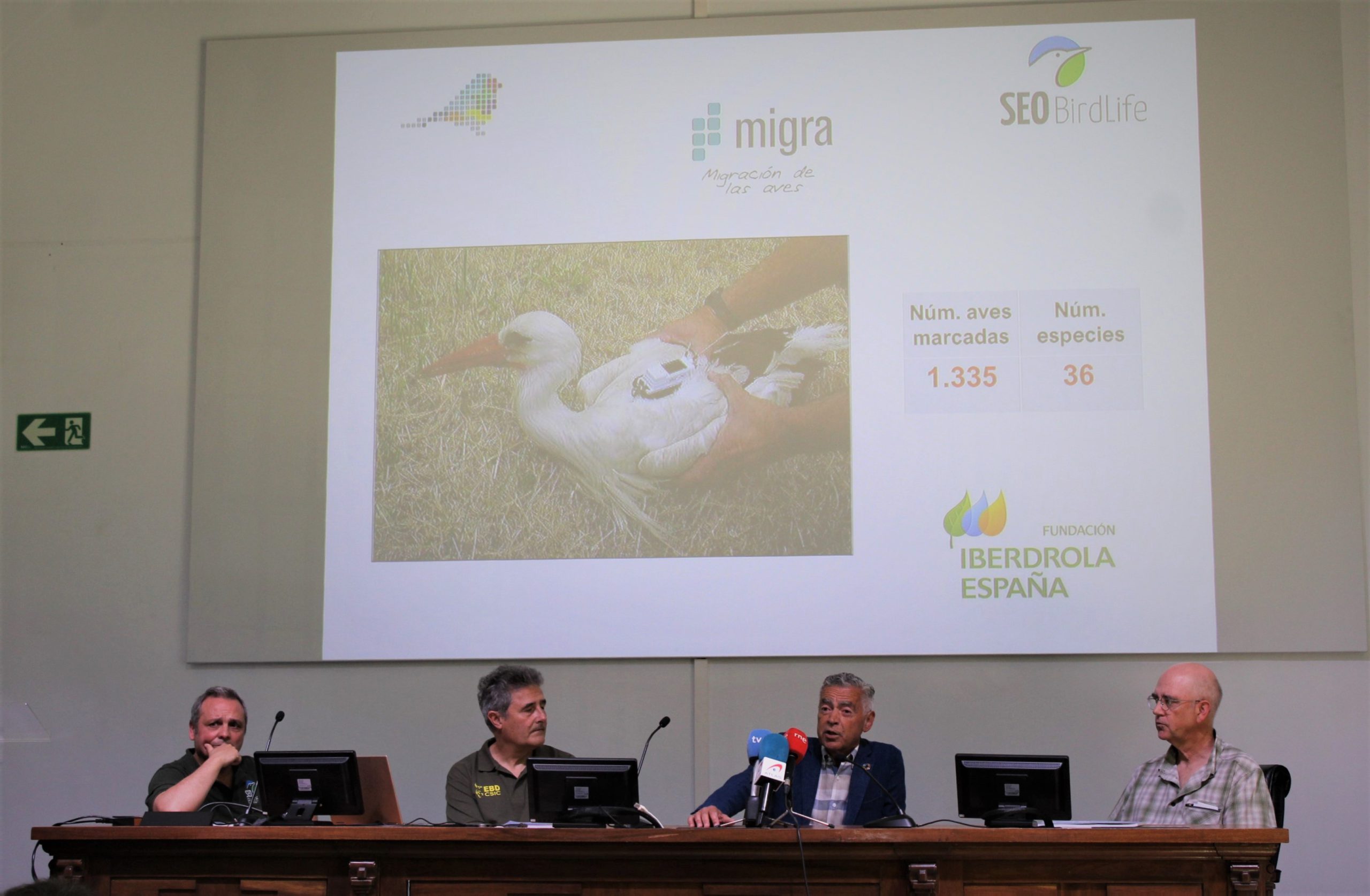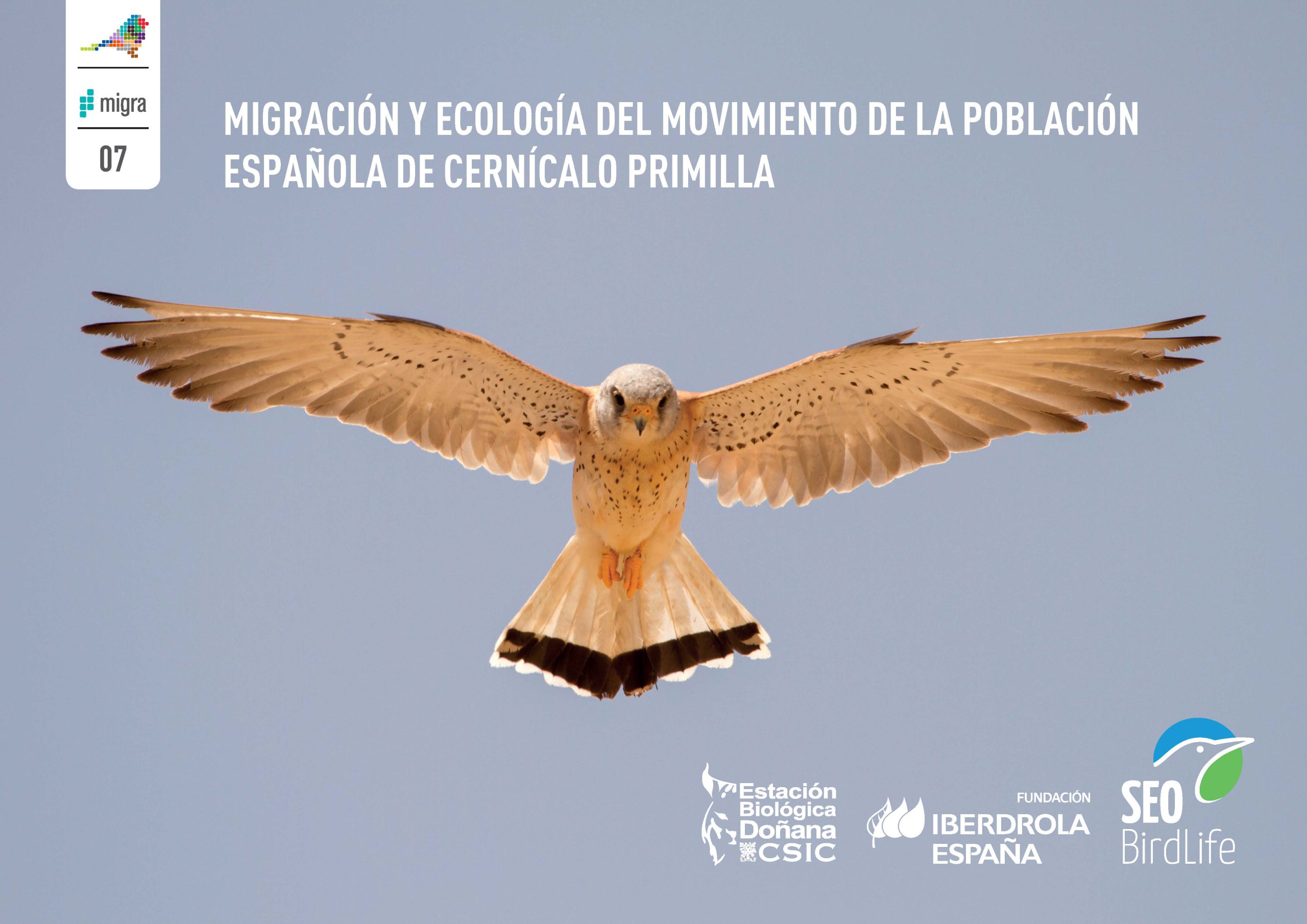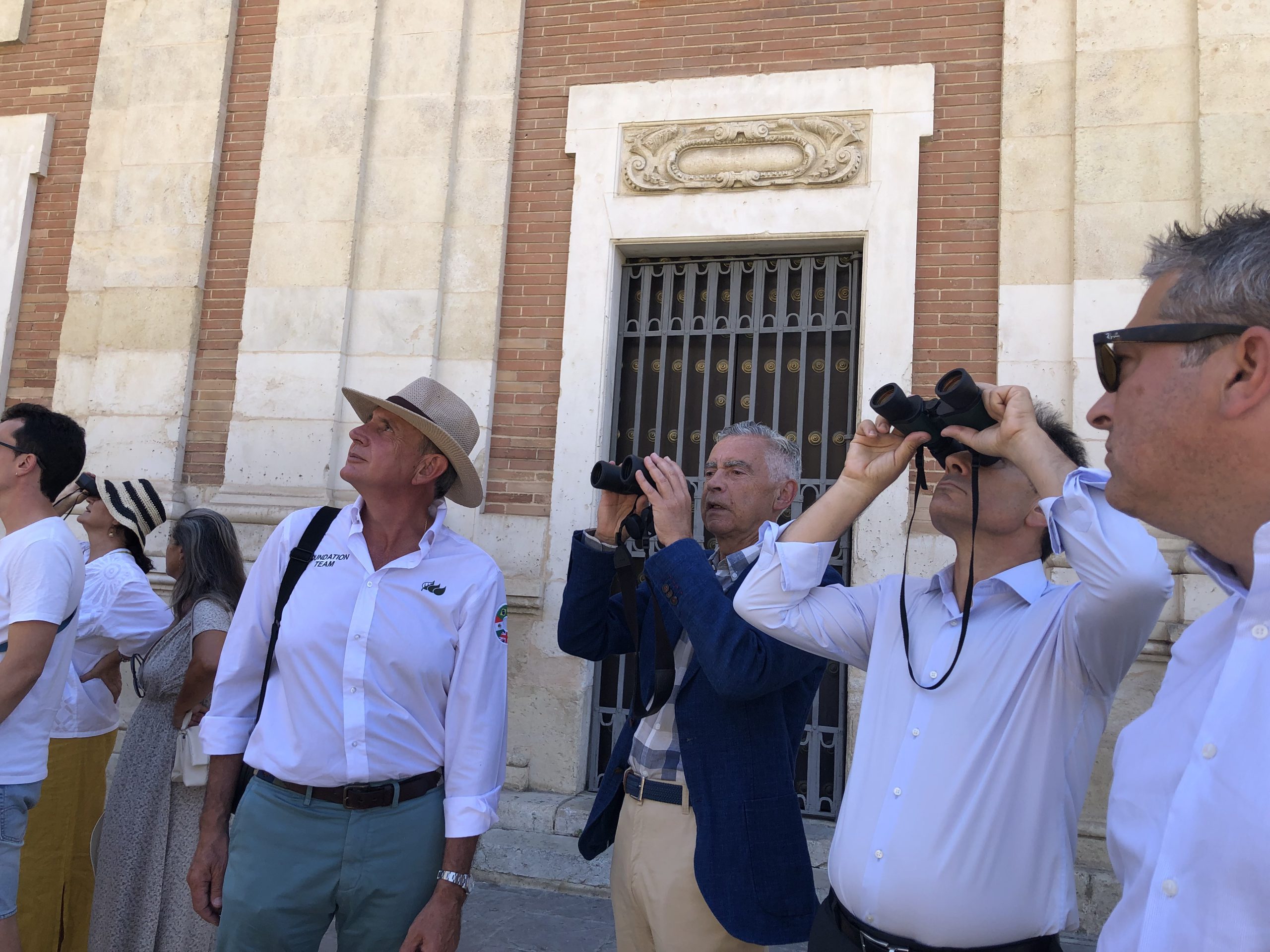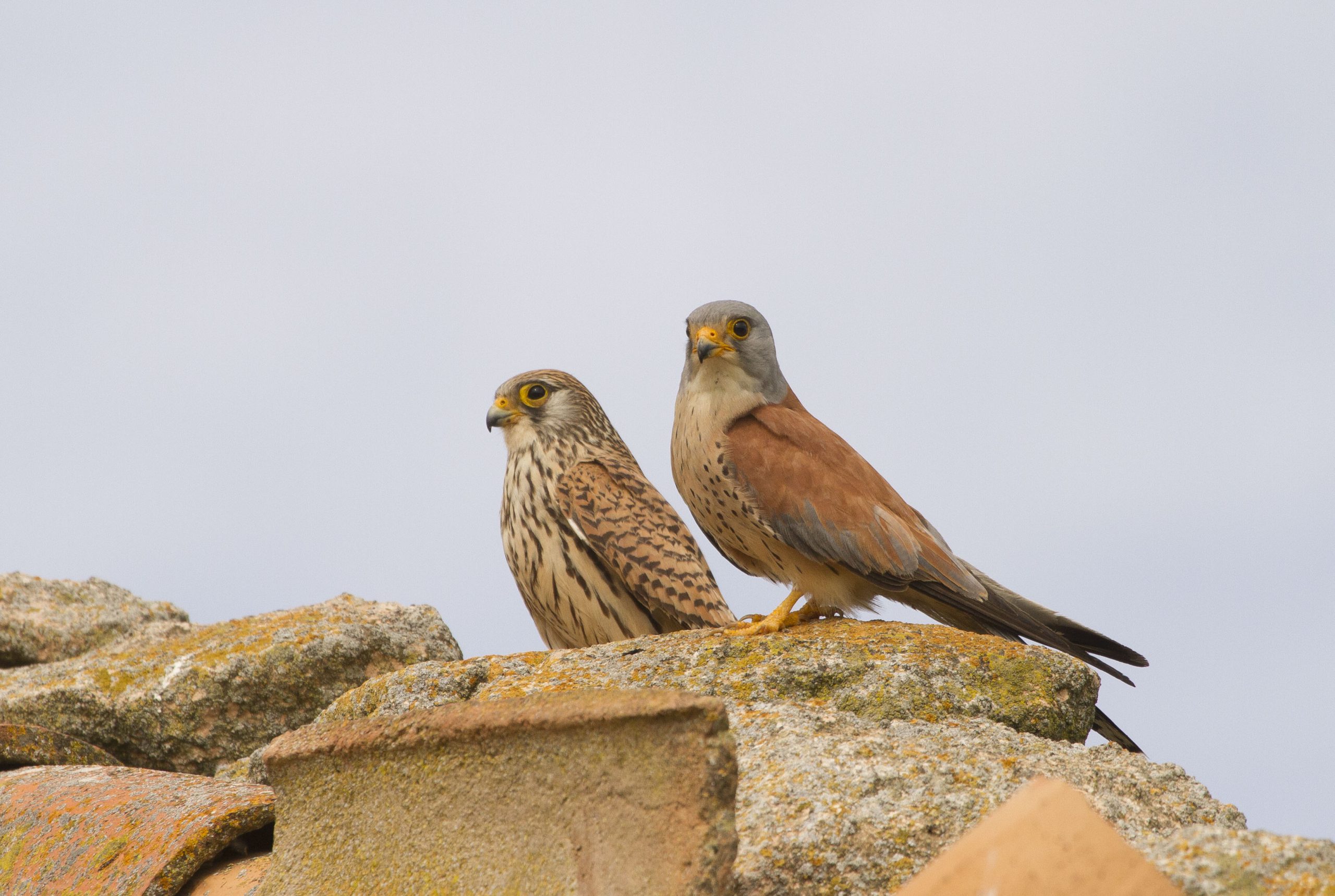- A new monograph collects data on nearly 200 birds of this emblematic species in Andalusia and their migratory routes
- Since 2011, 1,350 birds of 36 different species have been included in the MIGRA research and conservation program
Seville, 10/05/2023
The Migra Program of SEO/BirdLife, which has been developed with Fundación Iberdrola España for more than ten years, presents today a new publication that deepens the knowledge of one of the most emblematic species of birds of prey in Andalusia, the lesser kestrel.
The study has information from 198 adult lesser kestrels marked in different colonies between 2016 and 2022. One of these colonies is the one housed in the cathedral of Seville, which has been witnessed today during their visit by the entities organizing the study, on the occasion of World Migratory Bird Day to be celebrated on May 13.
Until now relatively little was known about their migratory and wintering movements. In this work, we have used GPS-UHF (ultra-high frequency) solar emitters and environmental data to study not only the ecology of their movements during the breeding period but also during their migration and wintering periods.
Specifically, data from fifty-four individuals have been used to study in detail the movement strategy and sex differences during the wintering period in West Africa. The results show that most individuals of the Spanish population move between two or three areas during the winter and that they have a certain tendency to winter in the same areas in successive years.
“We can see that the birds remain a high percentage of time faithful to the wintering areas, which is especially significant for the conservation of these colonies that we promote,” explains Fernando García Sánchez, president of Fundación Iberdrola España.
Unlike other species, they move westward or eastward, always staying in the northern fringe of the Sahel, to congregate in two well-defined areas at the end of the wintering period. Thus, it has been observed that 32% converge in Senegal, while 68% converge on the easternmost border between Mauritania and Mali.
In addition, an increase in activity has been detected at the end of the wintering period. This could be because the birds increase foraging to accumulate food reserves or because they suffer increased competition or resource depletion.
Migra Program
The Migra Program, launched in 2011 by SEO/BirdLife with the collaboration of Fundación Iberdrola España, incorporates the latest technologies in geolocation and remote monitoring systems to know in greater detail the movements of birds inside and outside our country. Thanks to this initiative, it is possible to know the start and end dates of their migrations, the stopping places and feeding points, the time it takes them to make these trips if they are repeated in spring and autumn migration, the main wintering and dispersal areas, or if the routes are the same year after year. Fundación Iberdrola España collaborates with this program as part of its activity in support of biodiversity, one of its main areas of action.
The Migra program currently has 1,335 marked birds of 36 different species. These figures are not only the result of specific marking work in the program itself but also of a great effort to establish agreements with other entities that provide data on marked birds. With this information, numerous monographs have already been published on the movements of Audouin’s gull, Booted eagle, Cory’s shearwater, Bulwer’s petrel, White stork, Eleonora’s falcon, and Red kite (https://seo.org/monografias-de-migracion/).




